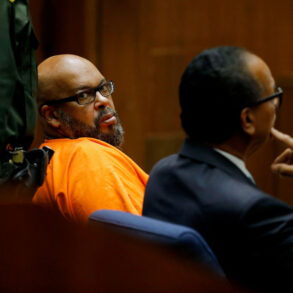Let it be known that the phrase “electric boogaloo” is never uttered in Breakin’ On the One (now streaming on Hulu), a short documentary reliving a critical moment in breakdancing and hip hop culture. Directed by the Brooklyn duo known as Jams and Bash (Jamaal Parham and Bashan Aquart), the film chronicles how two New York City breakdance collectives, the Dynamic Rockers and the Rocksteady Crew, popped-and-locked and headspun their way through a high-profile dance battle at the Lincoln Center in the summer of 1981 – and helped launch hip hop as a mainstream cultural force. So before you watch breakdancing’s debut in the Paris 2024 Summer Olympics, pop some fresh D-cells into your boombox and lay down your sheet of cardboard for this in-depth snapshot of the Moment Everything Changed.
The Gist: New York was a grimy, hardscrabble city in the late 1970s and early ’80s. It was in the throes of an economic downturn, and President Ford famously responded to pleas for federal help by telling the town to go pound sand. It was a tough place to live, but underground art thrived in that context – an ingrained sense of competition pushed the best punk, disco and rap to the forefront of the scene. And that’s where and when and how the breakdancing phenomenon began, with kids letting loose on sidewalks and at street parties and in skating rinks, often with DJs at their tables, spinning and scratching records through gigantic Jamaican sound systems.
Cut to archival footage of a White-guy cop sharing how his squad was called out to a “riot” on the streets, which turned out to be just a dance competition – and this isn’t the first time we’ll see stiff Caucasians try to explain things like “break dancing” (sic) and the hippity hops and all that. It was a true youth movement, with middle-schoolers, mostly Black and Puerto Rican, hanging out and feeling the music and doing what comes instinctively. The NYC spirit of competition turned these hangouts into improvisational “battles,” with each successive dancer trying to outdo the previous one’s moves. And to sound exactly like one of the aforementioned stiffnecks, let it be known that these moves can be broken down into two categories: “Rockin’” is performed on your feet; think pop-and-lock or that thing where you make one arm move like a wave and the wave goes across your shoulders to the other arm. (There’s probably an official slang term for that.) “Breakin’” is done on the ground – crabwalks and headspins and windmills, all the wild, flashy stuff.
From this scene emerged dance crews, most prominent among them the Dynamic Rockers, from Queens, and the Rocksteady Crew, from the Bronx. They became rivals, and to hear former members – now graying, but still very spirited in their commentary – tell it, it’s hard to determine if it was a friendly rivalry or one of true animosity. We get the story via the perspectives of those dancers, as well as historians and DJs and other artists, sharing their experiences and ex post facto analysis of the pop-cultural flashpoint that soon crossed over to MTV and the like and became a fad for some and a life for others. And now breakdancing is an official Olympic event.

What Movies Will It Remind You Of?: The Hip Hop Uncovered doc series is also on Hulu; the series Hip-Hop Evolution (currently on Netflix) won a Peabody in 2016.
Performance Worth Watching: Critical dance studies prof Imani Kai Johnson gives clear and concise foundational context for the breakdancing movement.
Memorable Dialogue: OK, so who won the battle?
“I think we won.” – Ken Swift, Rocksteady Crew
“We did away with Rocksteady that day.” – Eddie Ed (Osvaldo Luna), Dynamic Rockers
Sex and Skin: None.

Our Take: Nobody won and nobody lost and debate still rages whether breaking is a “sport” performed by “athletes” that belongs in the Olympics or an “art” performed by “artists.” (My two cents? Follow up Breakin’ On the One with an analysis of how breakdancing battles went from being highly subjective pseudo-competitions to the point where Olympic judges can determine winners by tenths of a point.) This crisp, concise 44-minute documentary outlines how iron-sharpens-iron competition made this sport-slash-art a boundary-hopping international pop-cultural powerhouse, and if it’s medium-informative, then it’s certainly highly enjoyable.
There are moments when Breakin’ On the One feels slight, and begs for a little more context (like I said, “electric boogaloo” remains untouched), but Jams and Bash’s efforts deserve praise for keeping tight focus on a key moment in 1981 when an underground movement suddenly found itself in the spotlight. Interviews with first-hand witnesses, Rocksteady and Dynamic Rockers members and cultural commentators are fun and lively without sacrificing insight. The film’s visual approach is dynamic and the editing maintains a quick, vibrant pace, all very much in the spirit of vintage NYC hip hop vibes. If anything – and unlike too many modern docs’ more-is-better M.O. – it’ll leave you wanting more, on to the Olympics, for better or worse (but mostly the better, it seems).
Our Call: Breakin’ On the One avoids the temptations of cultural gatekeeping – you know, the it was better for it was popular kind of bull roar – and instead is a celebration of a highly infectious and vital cultural movement. So accentuate the positive and STREAM IT.
John Serba is a freelance writer and film critic based in Grand Rapids, Michigan.
This post was originally published on this site be sure to check out more of their content.




